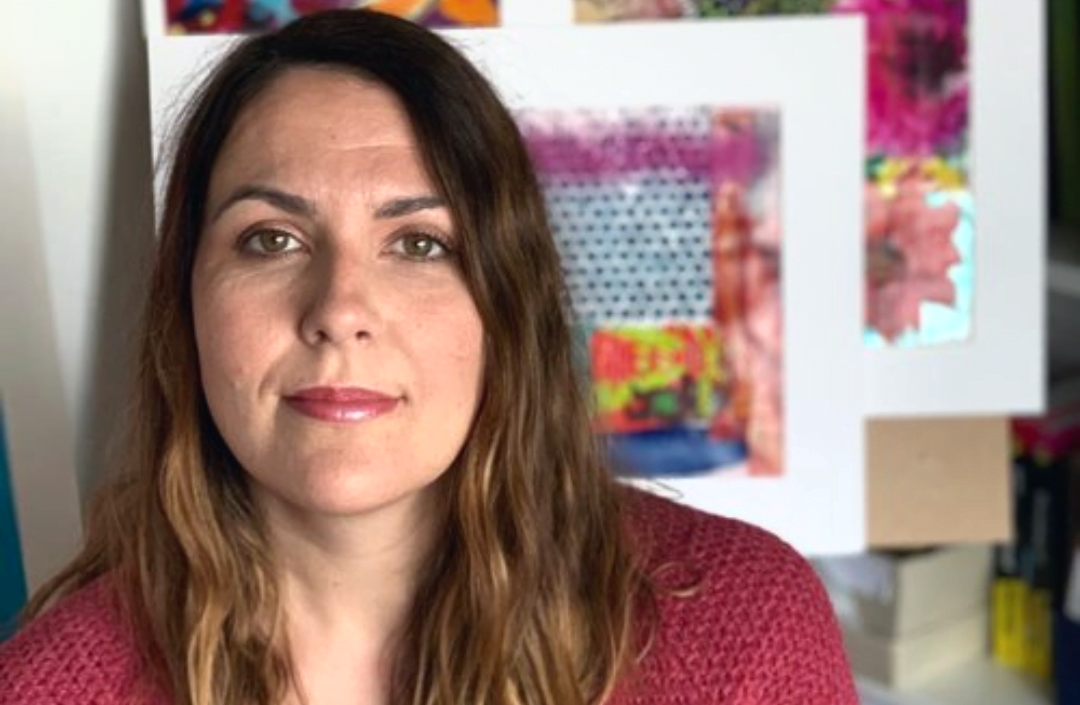- Structure and shape can be the building blocks of any great work of art, however the composition does not always have to be representational. :
Our Head of Art Luke Baker recently sat down with Little Van Gogh artist Gavin Atashkar to discuss her artistic process and how she draws inspiration from the seasons and nature.
Where do you find inspiration?
My practice is a process of mind travel where I connect with an inner sense of peace through texture, nature and luminosity of colour. These three things remind me of early year sensory experiences of joy and peace, of awe and wonder taking me back to an exploratory curiosity. I find inspiration through the seasons, through nature and yet I am not seeking to represent a certain place but a sense of voyage into calm and tranquillity.
How has your practice changed over time?
I’m growing in knowing what I’m drawn to and in exploring the why behind it. I realise that a lot of the inspirational references for me come from nature and looking at it in a childlike sense of awe and wonder. In that sense as I now go deeper and learn to really see or sense and feel alongside the practice. I am also really enjoying the process of creative exploration more. It can start with something as banal as sorting out your studio space and evolve into putting order into the chaos of image collecting through photos by scrapbooking initial thoughts and inspirations. Then collecting my wall of inspiration whilst sorting through and curating what I will focus on. I’ve also become better at self-organising in that respect, just the basics like stock management and time management and knowing when to press in for more and when to pull back. In that respect I have learnt to balance myself more.
Who are your biggest artistic influences?
I love classics such as Bonnard, Monet and Hockney, but in terms of current living artists I love Emily Powell, Sarah Moon, Mary West, Barbara Rae, Mali Morris, David Mankin and David Wiseman in addition to emerging artists such as Lakwena, Kara Baah and Nathan Obokoh.

‘Awakening’

‘Deep’
What’s the purpose or goal of your work?
If someone looks at a piece and it immediately sings to an aspect of their heart, that is very touching and moving for me. Children know this intuitively and as adults we sometimes overthink and feel we have to grasp art in an academic way, when really children know straight away if they like something or not. If I sense an initial ‘everyday joy pop’ then I have hit the spot. If not, maybe my practice is not for them and that’s fine as there is beauty in diversity. If we all liked the same thing the world would be very boring!
Does creating art help you in any other areas of your life?
Art helps me with my wellbeing, my peace and joy. It helps to regulate me emotionally and helps me to process things. It helps me to not think – to process things in an intuitive and sensory way. It helps me to treat myself with kindness and to operate in an overflow space to expand that to others. I hope that in this respect the art can communicate this to someone else too. Having a piece in a living room or office can really transform a space and help carry that sense of peace with it.
What’s the best piece of advice you have ever been given?
My best advice came from a colleague who challenged me on the concept of time; ‘chronos’ v’s ‘kairos’. In western thought we are often obsessed with ‘what’s next’; the moment we finish one thing we are on a conveyor belt to the next, in this respect we obsess over the chronological sequence of life. But what brings us into a more eternal perspective is when we perceive time as ‘kairos’. In ancient Greek ‘kairos’ is about timeliness; the special moment when it’s the opportune time to do a particular thing. That ‘thing’ for me is creativity and in particular, art – it adds the special secret sauce to my whole being. This advice really helped me to position where to focus my attention.

